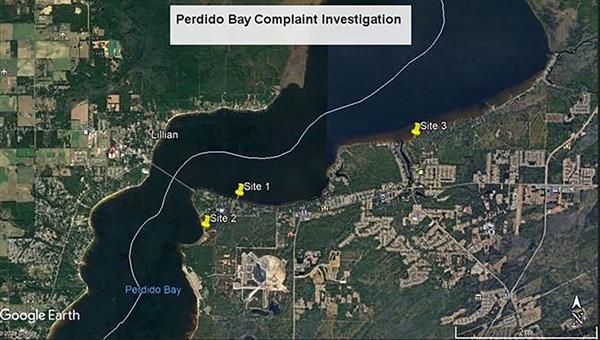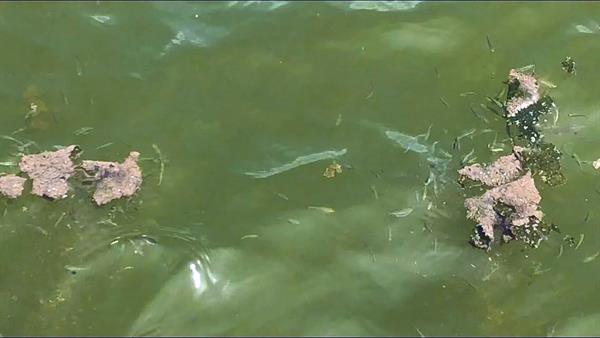Escambia County scientists from the Natural Resources Management Department responded on Monday, June 1 to water quality concerns regarding reports of floating algae mats and possible high bacteria concentrations in Perdido Bay. County staff collected three separate samples along the Florida side of Perdido Bay, north and south of the Lillian Bridge.
Samples were analyzed in the Escambia County water quality laboratory for enterococci bacteria, which is an indicator of possible fecal contamination in marine or brackish waters. County test results from Monday afternoon show low levels of enterococci bacteria well below the Florida water quality standard. The Florida Department of Health uses 70 colonies/100 mL as their threshold for issuing a health advisory under the Healthy Beaches Program. All three of the county samples collected earlier this week were below 20 colonies/100mL.
The Florida Department of Environmental Protection conducted DNA-based tests to evaluate for human markers of wastewater. On Wednesday, June 3, all three of the FDEP samples results were non-detect for these markers suggesting the material of concern is not human sewage.
The algae mats observed in the bay are Lyngbya and Spirulina (blue-green algae in the Cyanobacteria phylum). These algal species are commonly found in warm brackish waters and do not produce harmful toxins. A diverse bacterial community and diatoms are often found living within the matrix of the algae. These types of algal mats are more common during drought conditions and a significant rain event will likely dissipate the mats. Swimmers may choose to not swim in areas where these mats are floating around because contact with the algae may cause dermatitis or skin irritation in some people with sensitive skin.
Escambia County staff will continue to monitor the water quality in the area and advise the public of results. For more information, contact the Florida Department of Health in Escambia County at 850-595-6700 or visit the Florida Healthy Beaches website.


